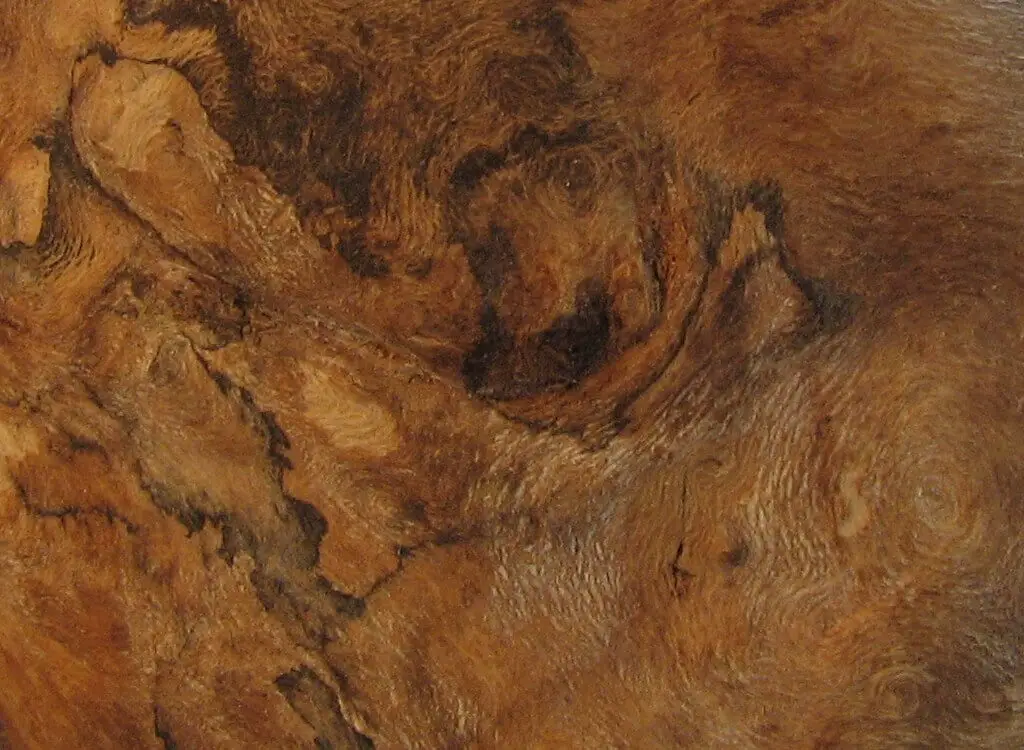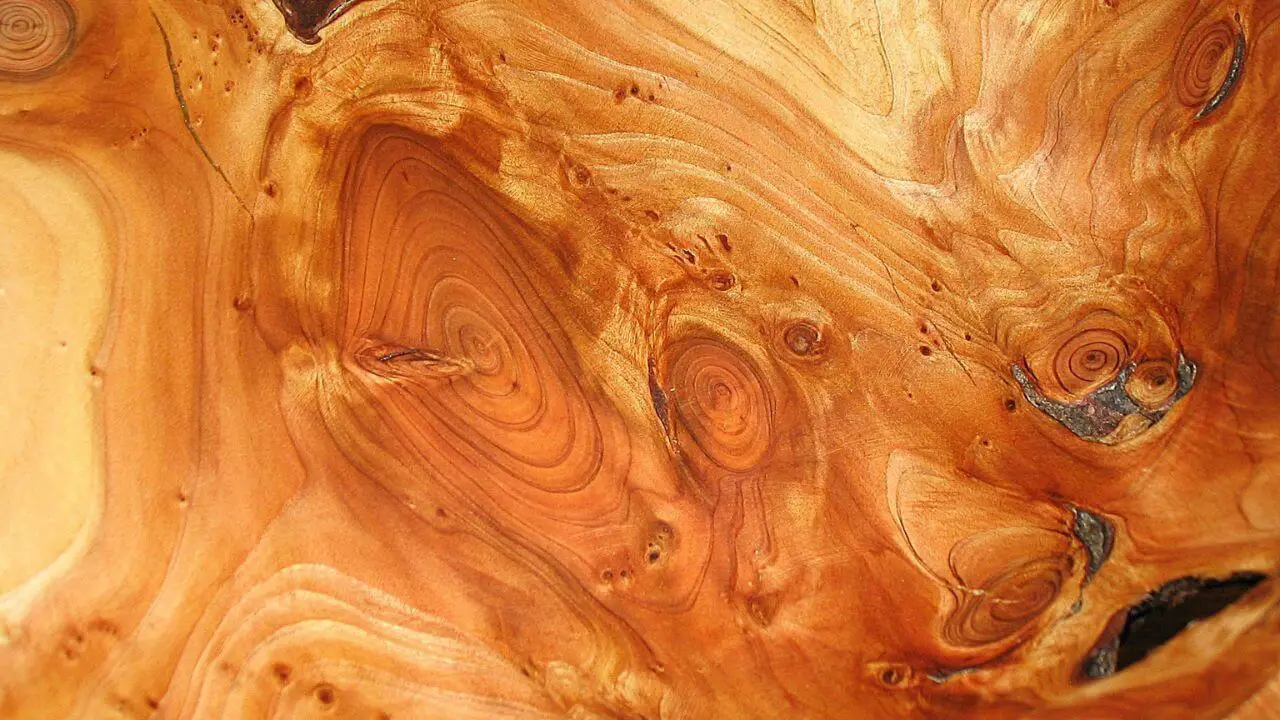Burl wood is one of the most intriguing and visually captivating types of wood available. It’s not just any ordinary wood, but a prized material in woodworking, renowned for its irregular, swirling grain patterns and unique characteristics. Whether used in furniture, art, or musical instruments, burl wood has a distinctive charm that makes it highly sought after. But what exactly is burl wood, and how does it differ from other types of wood?
What is Burl Wood?
Burl wood comes from a tree growth known as a “burl.” Burls are unusual growths that form on trees, usually in response to some kind of stress or injury. These growths might be caused by damage, fungal infections, or insect infestations, but instead of harming the tree, they lead to the creation of these magnificent, twisted, and knotted sections of wood.
Unlike the straight grain of regular wood, burl wood has swirling, twisted grain patterns that make each piece truly one-of-a-kind. In the world of woodworking, these wild patterns are what make burl wood so valuable.
Formation of Burl Wood
Burl wood forms when the tree undergoes stress. When an injury or infection occurs, the tree’s growth becomes irregular, causing the grain to twist, turn, and swirl. This results in the formation of knots and intricate patterns inside the burl. Over time, this growth becomes more pronounced, and the burl swells outward, creating a large, bulbous knot.
Burls can form on many species of trees, though not all trees produce them. The exact cause of burl formation is not always clear, and that unpredictability adds to its rarity and value. These natural anomalies are typically found near the base, on the trunk, or on branches of trees.
Types of Trees that Produce Burl Wood
Many types of trees can develop burls, but some species are more prone to producing burl wood than others. Here are a few common types:
- Maple: One of the most popular species for burl wood, maple trees produce beautiful, light-colored burls.
- Walnut: Walnut burl is often dark, with deep, rich grain patterns that make it a favorite for high-end furniture.
- Oak: Oak burl tends to have a coarser texture, but the complex patterns make it a stunning choice for woodworking.
- Redwood: Burl from redwood trees is famous for its deep red color and is commonly used for artistic creations.
Appearance of Burl Wood

The appearance of burl wood is what sets it apart from all other types of wood. The swirling patterns, knots, and “eyes” that appear in the grain give each piece a unique, almost surreal aesthetic. No two pieces of burl wood are alike, which is why it’s such a prized material among artisans and woodworkers.
Colors can vary widely depending on the tree species. For example, walnut burl wood may have deep chocolate and coffee tones, while maple burl has lighter, more golden hues. The texture can range from smooth to highly irregular, depending on the type of tree and the size of the burl.
Types of Burl Wood
Burl wood comes in many varieties, depending on the tree it’s sourced from. Here are some notable examples:
- Maple Burl: Known for its pale, creamy color and tight grain patterns, maple burl is one of the most popular choices.
- Walnut Burl: With a darker tone and more open grain, walnut burl wood is commonly used in high-end furniture.
- Redwood Burl: Prized for its rich red hues, redwood burl is often used in artistic woodworking projects.
Other types of burl wood, such as elm, madrone, and oak, are also highly valued in the world of fine woodworking.
Uses of Burl Wood
1. Furniture
Burl wood is a favorite for crafting luxury furniture. Its stunning patterns make it ideal for statement pieces like tables, desks, and headboards. Because each burl wood piece is unique, burl wood furniture is often seen as a collector’s item. The swirling patterns create a natural work of art that adds character and elegance to any room.
2. Wood Veneer
Burl wood veneer is widely used in cabinetry, wall paneling, and custom car interiors. A veneer is a thin slice of wood that is applied over less expensive wood to give the appearance of solid burl. This is a cost-effective way to enjoy the beauty of burl without the high price tag.
3. Artistic Pieces
Artists and sculptors love working with burl wood because of its unpredictable and fascinating grain patterns. Burl wood is often used in woodturning, where it’s carved into bowls, sculptures, and other decorative items.
4. Musical Instruments
Guitar makers and other luthiers often use burl wood for creating one-of-a-kind instruments. The striking grain patterns make for visually stunning guitars, violins, and other stringed instruments.
5. Luxury Items
Because of its rarity and beauty, burl wood is also used to create high-end products like jewelry boxes, writing pens, and other custom-made luxury items.
Why is Burl Wood So Expensive?
Burl wood is one of the most expensive woods on the market. Its high cost is due to several factors:
- Rarity: Burl wood doesn’t grow on every tree. It’s a rare, natural occurrence, and burls large enough for woodworking are even rarer.
- Difficulty in Harvesting: Burls are often found in hard-to-reach parts of the tree, making harvesting a tricky and labor-intensive process.
- Demand: Fine woodworkers, artists, and luxury brands are always on the lookout for high-quality burl wood, driving up its price.
Sustainability and Environmental Impact
The rising demand for burl wood has led to some concerns about over-harvesting. Cutting down trees for their burls can lead to deforestation if not done sustainably. Many wood suppliers are now emphasizing ethical and sustainable harvesting practices, ensuring that burl wood is sourced responsibly.
How to Care for Burl Wood
If you own a piece of burl wood furniture or decor, proper care is essential to maintain its beauty. Burl wood, like other fine woods, requires regular dusting and polishing. Avoid placing burl wood furniture in direct sunlight, as prolonged exposure can fade its color. Using a humidifier can help prevent cracking or warping in dry climates.
Burl Wood vs. Regular Wood
When comparing burl wood to regular wood, the most obvious difference is in appearance. Regular wood typically has straight or slightly wavy grain patterns, while burl wood features chaotic, swirling grains. Burl wood is also more challenging to work with due to its unpredictable grain structure, but the end result is a visually striking piece that regular wood simply can’t match.
Conclusion
Burl wood is a treasure in the world of woodworking. Its rarity, unique grain patterns, and the skill required to work with it all contribute to its high value. Whether in furniture, art, or musical instruments, burl wood brings a sense of luxury and natural beauty to any piece it’s used in. For those who appreciate fine craftsmanship and natural beauty, burl wood is truly one-of-a-kind.
FAQs
How can I identify real burl wood?
Look for irregular grain patterns and swirling designs; no two pieces should look the same.
Can burl wood furniture be repaired?
Yes, minor scratches and damage can often be repaired, but significant damage may require professional restoration.
Is burl wood considered eco-friendly?
It depends on how it is sourced. Burl wood from sustainable forests can be eco-friendly, but illegal harvesting can harm the environment.
Does burl wood warp or crack easily?
Burl wood is dense, which makes it resistant to warping. However, improper care or changes in humidity can lead to cracking.
Are there any alternatives to burl wood?
Some woodworkers use artificial or faux burls, but nothing matches the natural beauty of real burl wood.

